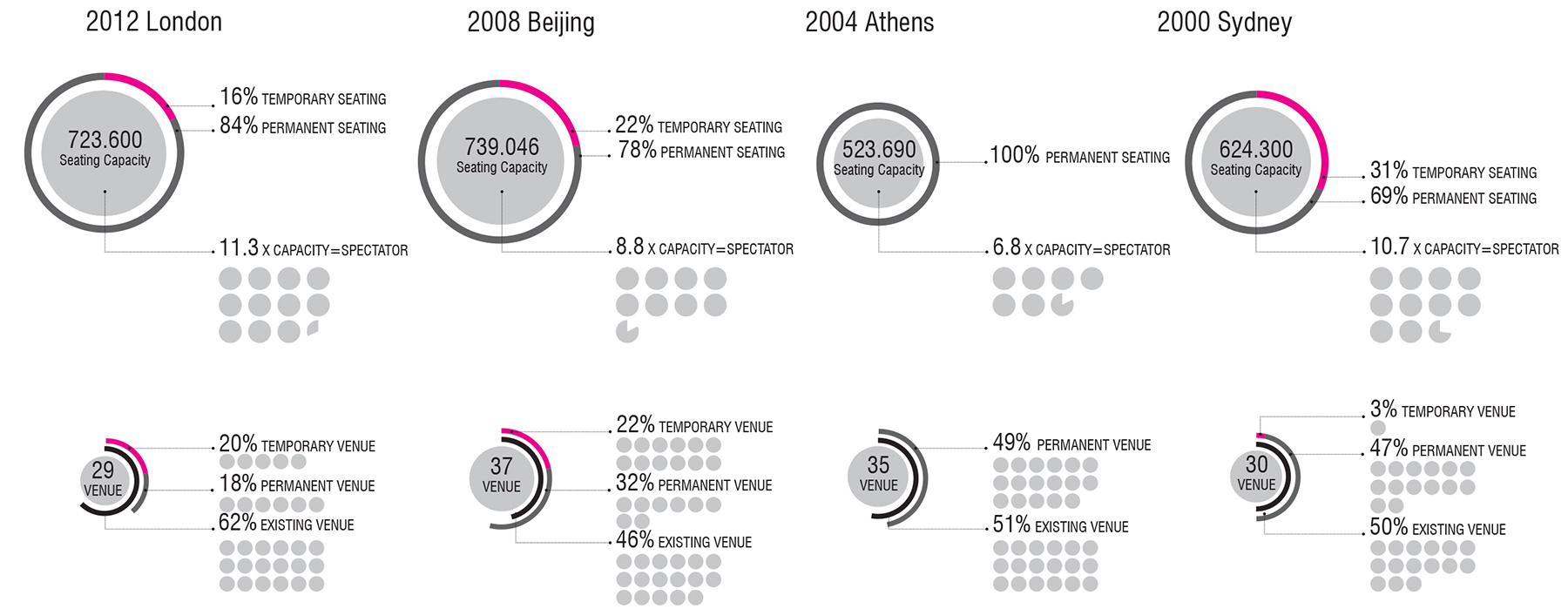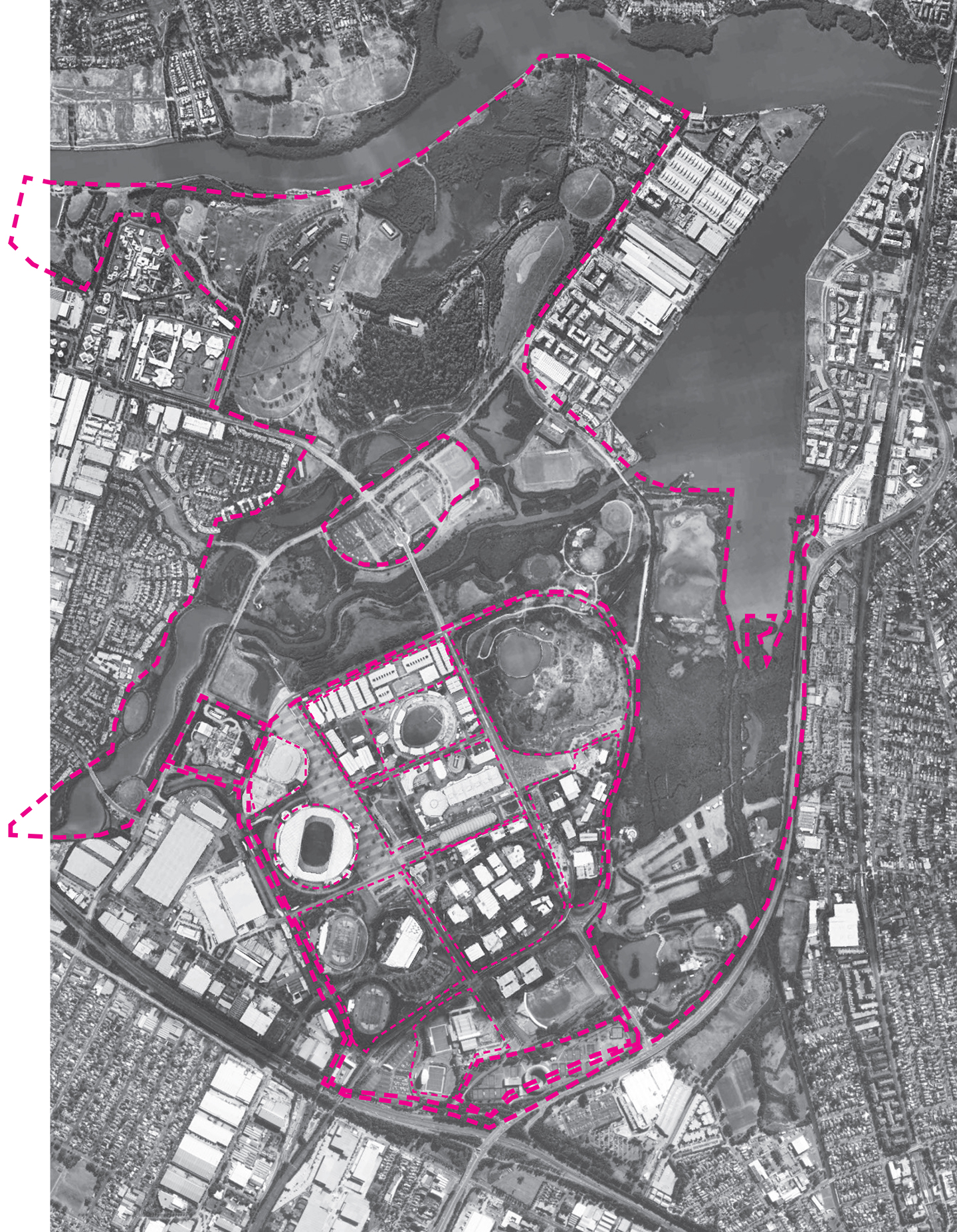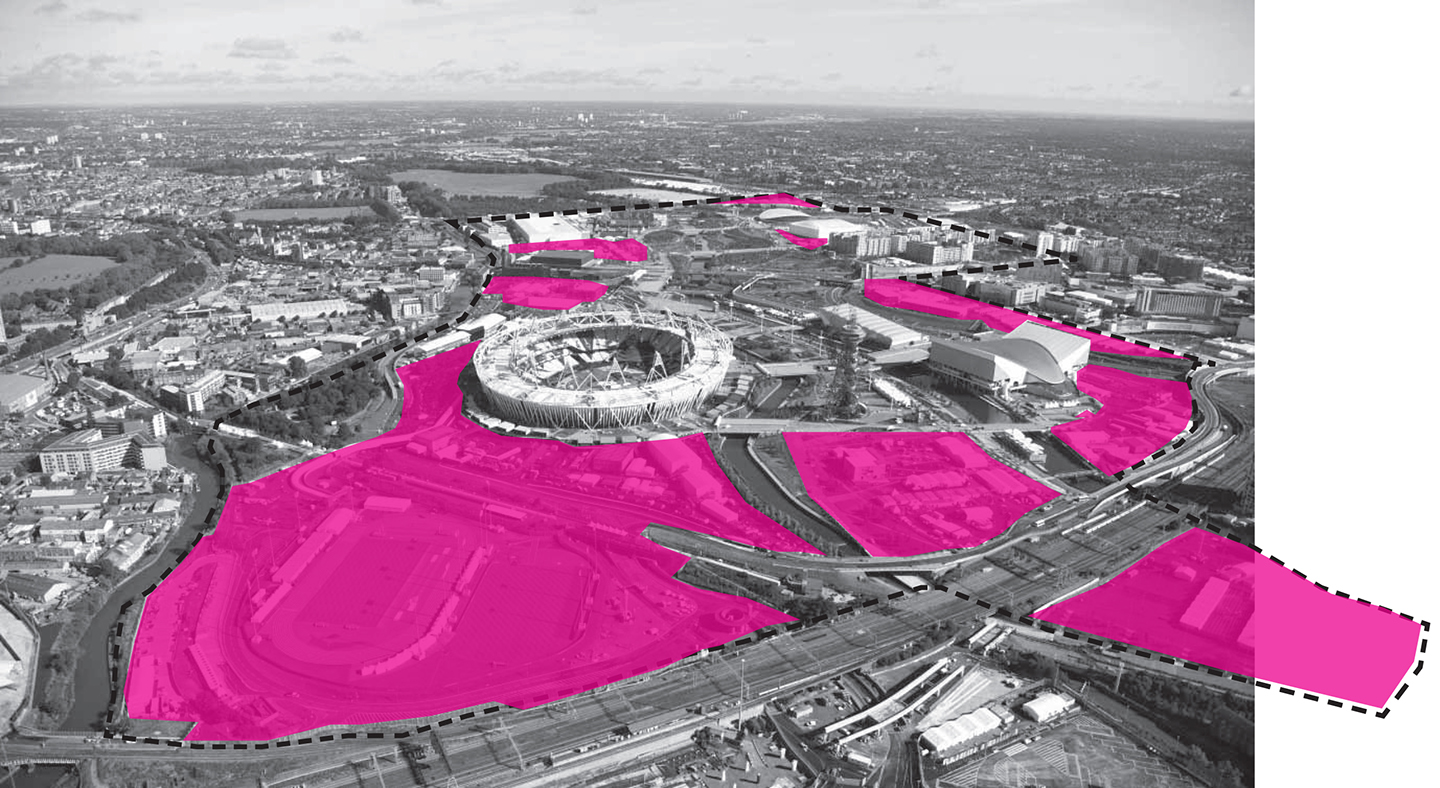[Re]Consideration of the Architectural Program of the Olympic Games
A thesis submitted to The Graduate School of Natural and Applied Sciences of Middle East Technical University
Supervisor: Berin Gur
The role of ‘architectural program’ in the design phase of the Olympic structures becomes prominent with regard to the processes of development, transformation, and deformation that the cities have undergone by hosting the Olympic Games. Considering the previous examples, especially, the transition from the pre-determined program for the event phase to the indetermined program for the post event phase appears to be the main problem, since it is, generally, not well defined in the beginning of the whole process and then it turns into an ambiguous transition. This transition process results in the problems related with the integration and re-adaptation of the Olympic structures into the local context in the post-event phase.
![]() Figure 1: Comparison of number of buildings, their capacities and events in the last four Olympic Games [2000-2012]. (Drawing by the author)
Figure 1: Comparison of number of buildings, their capacities and events in the last four Olympic Games [2000-2012]. (Drawing by the author)
![]() Figure 1: Composite axonometrics of the two Terragni projects including plan, parti diagram, model and exploded model. (a) The Mambretti tomb; (b) The Danteum. (Drawing by authors)
Figure 1: Composite axonometrics of the two Terragni projects including plan, parti diagram, model and exploded model. (a) The Mambretti tomb; (b) The Danteum. (Drawing by authors)
This thesis argues for the fact that the main issue behind these problems is the architectural programming of the Olympic Games. Then, it aims at reconsidering the architectural program of the Olympic Games in order to address existing programmatic issues that give way to the integration and re-adaptation problems. In doing so, ‘programmatic layering’, which encourages the coexistence of various activities emerging from the interaction among the various program layers, is discussed as a design tool to define the programmatic transition in the design phase.
![]() Figure 1: Transformation of the consequences of the design issues by the help of the ‘programmatic flexibility and temporality’. (Drawing by the author)
Figure 1: Transformation of the consequences of the design issues by the help of the ‘programmatic flexibility and temporality’. (Drawing by the author)
This thesis claims that the Olympic structures should be designed with a certain level of programmatic flexibility and temporality through a proposed scenario for the long-term development in order to accommodate various programmatic layers in the structures, which are shaped with a certain level of permanency by pre-determined program. It is shown that the architecture of the Olympic structures has hardly evolved their form and spatio-functional schema despite of the several changes and updates in the program of the Olympic Games. The significant conclusion of this thesis is that the narration of the host cities has gained power to manage the program through the Olympic processes, yet the host cities underestimate the influence of the narration on the long-term development by focusing on only the issue of staging the Games.
![]() Figure 1: Functional and spatial compartmentalization in the Sydney Olympic Park, 2000. Source: (Drawing by the author)
Figure 1: Functional and spatial compartmentalization in the Sydney Olympic Park, 2000. Source: (Drawing by the author)
![]()
Figure 1: The service areas, which are generated to meet the requirements of the IOC in the London Olympic Park, 2012. (Drawing by the author)
![]()
Figure 1: Comparison of temporary and permanent capacity of London Aquatics Center. (Drawing by the author)
 Figure 1: Comparison of number of buildings, their capacities and events in the last four Olympic Games [2000-2012]. (Drawing by the author)
Figure 1: Comparison of number of buildings, their capacities and events in the last four Olympic Games [2000-2012]. (Drawing by the author) Figure 1: Composite axonometrics of the two Terragni projects including plan, parti diagram, model and exploded model. (a) The Mambretti tomb; (b) The Danteum. (Drawing by authors)
Figure 1: Composite axonometrics of the two Terragni projects including plan, parti diagram, model and exploded model. (a) The Mambretti tomb; (b) The Danteum. (Drawing by authors)This thesis argues for the fact that the main issue behind these problems is the architectural programming of the Olympic Games. Then, it aims at reconsidering the architectural program of the Olympic Games in order to address existing programmatic issues that give way to the integration and re-adaptation problems. In doing so, ‘programmatic layering’, which encourages the coexistence of various activities emerging from the interaction among the various program layers, is discussed as a design tool to define the programmatic transition in the design phase.
 Figure 1: Transformation of the consequences of the design issues by the help of the ‘programmatic flexibility and temporality’. (Drawing by the author)
Figure 1: Transformation of the consequences of the design issues by the help of the ‘programmatic flexibility and temporality’. (Drawing by the author)This thesis claims that the Olympic structures should be designed with a certain level of programmatic flexibility and temporality through a proposed scenario for the long-term development in order to accommodate various programmatic layers in the structures, which are shaped with a certain level of permanency by pre-determined program. It is shown that the architecture of the Olympic structures has hardly evolved their form and spatio-functional schema despite of the several changes and updates in the program of the Olympic Games. The significant conclusion of this thesis is that the narration of the host cities has gained power to manage the program through the Olympic processes, yet the host cities underestimate the influence of the narration on the long-term development by focusing on only the issue of staging the Games.
 Figure 1: Functional and spatial compartmentalization in the Sydney Olympic Park, 2000. Source: (Drawing by the author)
Figure 1: Functional and spatial compartmentalization in the Sydney Olympic Park, 2000. Source: (Drawing by the author)
Figure 1: The service areas, which are generated to meet the requirements of the IOC in the London Olympic Park, 2012. (Drawing by the author)

Figure 1: Comparison of temporary and permanent capacity of London Aquatics Center. (Drawing by the author)